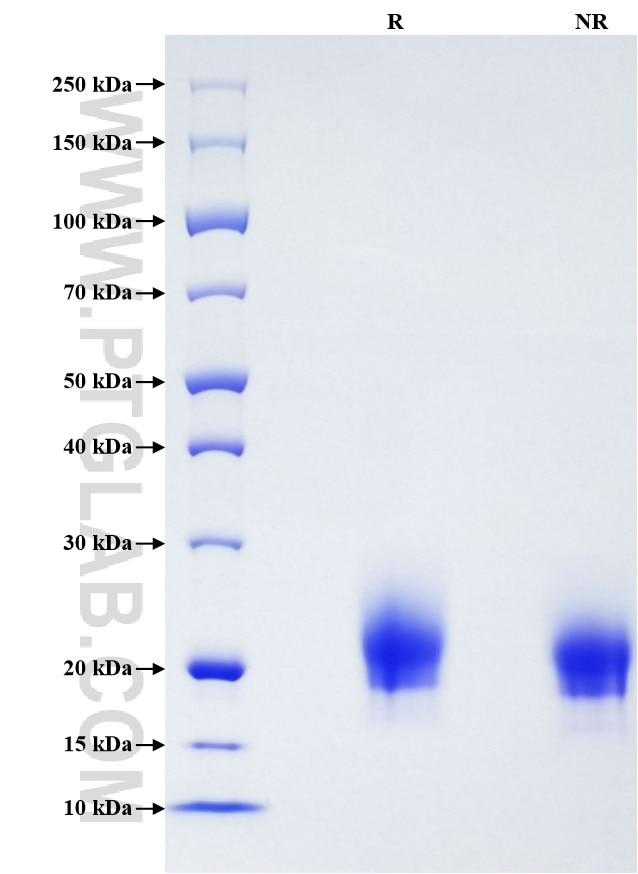Recombinant Human GM-CSF protein (His Tag)
Species
Human
Purity
>90 %, SDS-PAGE
Tag
His Tag
Activity
not tested
Cat no : Eg0189
Validation Data Gallery
Product Information
| Purity | >90 %, SDS-PAGE |
| Endotoxin | <0.1 EU/μg protein, LAL method |
| Activity |
Not tested |
| Expression | HEK293-derived Human GM-CSF protein Ala18-Glu144 (Accession# P04141) with a His tag at the N-terminus. |
| GeneID | 1437 |
| Accession | P04141 |
| PredictedSize | 15.3 kDa |
| SDS-PAGE | 18-25 kDa, reducing (R) conditions |
| Formulation | Lyophilized from 0.22 μm filtered solution in PBS, pH 7.4. Normally 5% trehalose and 5% mannitol are added as protectants before lyophilization. |
| Reconstitution | Briefly centrifuge the tube before opening. Reconstitute at 0.1-0.5 mg/mL in sterile water. |
| Storage Conditions |
It is recommended that the protein be aliquoted for optimal storage. Avoid repeated freeze-thaw cycles.
|
| Shipping | The product is shipped at ambient temperature. Upon receipt, store it immediately at the recommended temperature. |
Background
CSF2, also named as GM-CSF, is an important hematopoietic growth factor and immune modulator, which is produced by a variety of cell types including T cells, macrophages, endothelial cells and fibroblasts upon receiving immune stimuli. It was originally recognized as a stimulator for the proliferation of granulocytes and macrophages from bone marrow precursor cells. It has also been shown to promote the survival and activation of mature myeloid cells and therefore contributes to the maintenance of innate immune homeostasis. Recent studies suggest that GM-CSF also has proinflammatory functions and plays critical roles in the development of autoimmune and inflammatory diseases, particularly in Th17 driven diseases. GM-CSF also plays a role in embryonic development by functioning as an embryokine produced by reproductive tract.
References:
1. Burgess AW. et al. (1977). J Biol Chem.252: 1998-2003. 2. Shi Y. et al. (2006). Cell Res. 16: 126-33. 3. Hamilton JA. et al. (2013)Trends Immunol. 3: 81-9. 4. Codarri L. et al. (2011) Nat Immunol.12: 560-7. 5. Hamilton JA. et al. (2013)Trends Immunol. 23: 403-8. 6. Hansen PJ. et al. (2014) Anim Reprod Sci. 149: 59-6.

